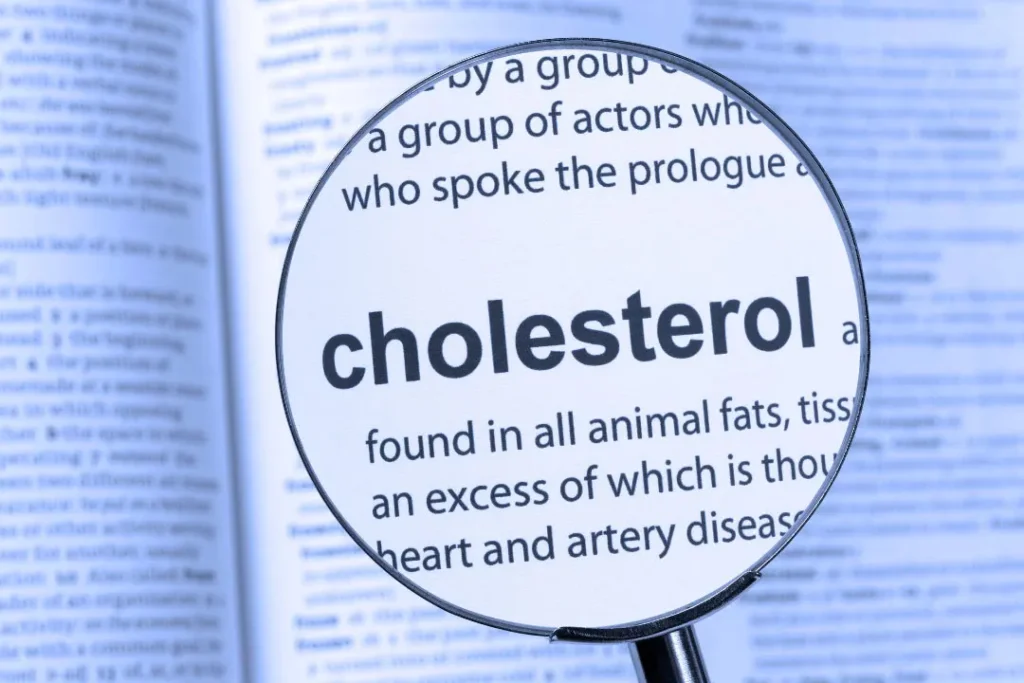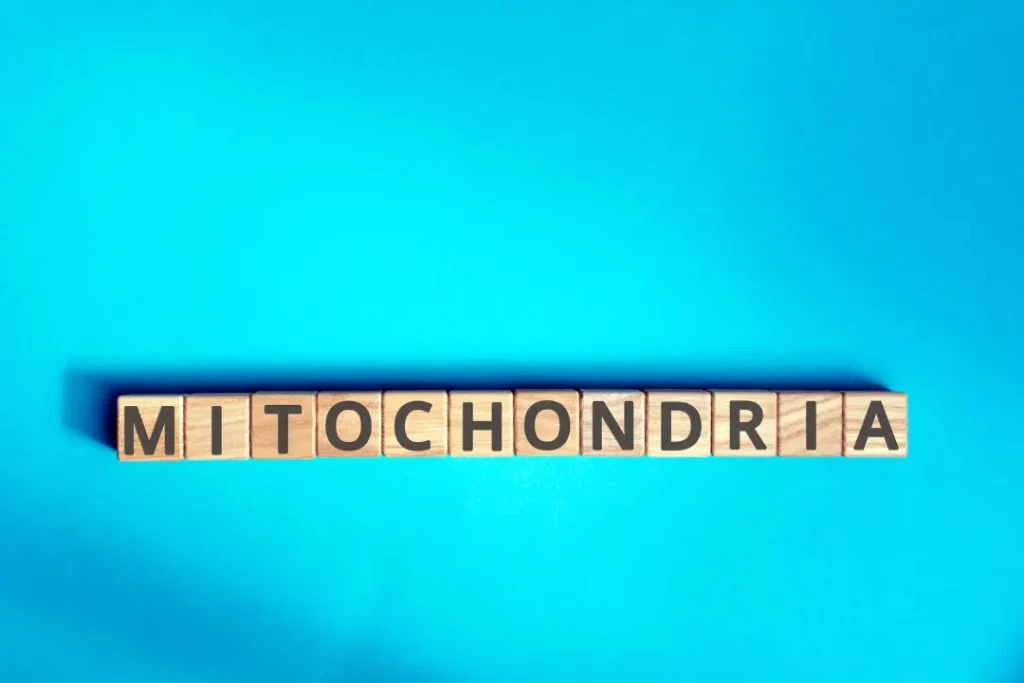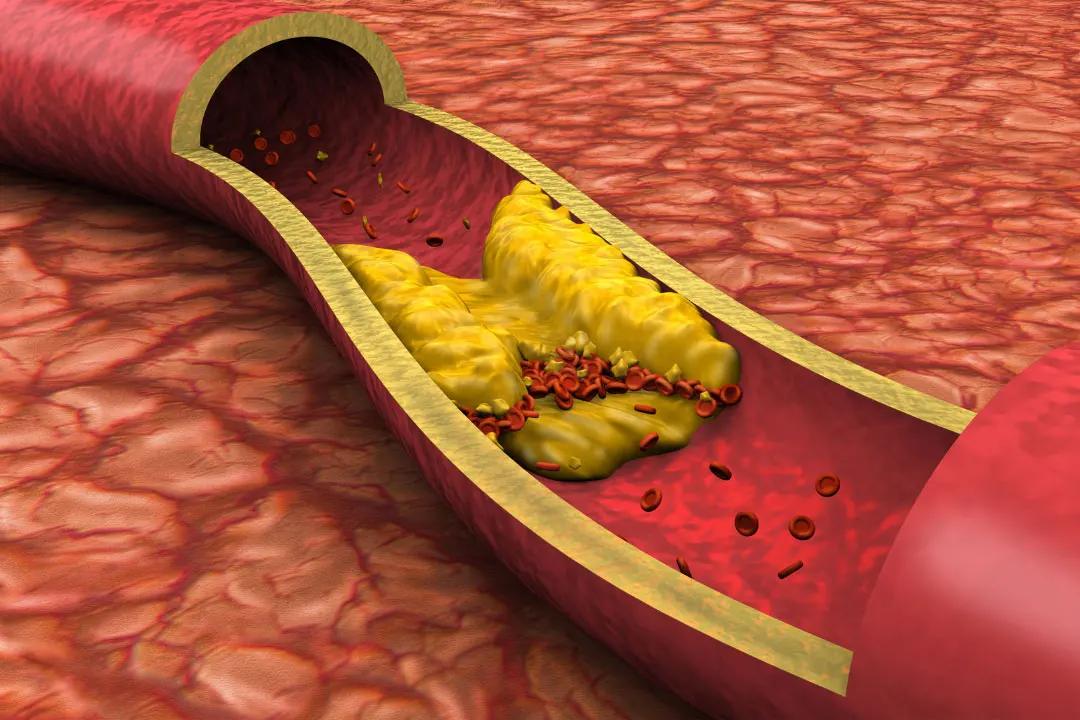Also known as a roto rooter for clogged arteries, an atherectomy is a procedure typically used to treat peripheral artery disease (PAD). We’ll discuss five great ways to support your heart health and help prevent the need for this invasive procedure.
Peripheral artery disease (PAD) is a serious condition affecting approximately 6.5 million
Americans. This disease causes blood vessels in your legs or arms to become narrowed or blocked due to the buildup of arterial plaque, mostly comprised of fat and cholesterol, on the arterial walls. PAD can put you at risk of developing coronary artery disease, which could lead to a heart attack or stroke.
PAD is treatable with drugs, or a minor surgery called an atherectomy. During an atherectomy, a doctor uses a blade or laser at the end of a catheter and feeds it through your arteries to remove plaque and improve blood flow. This procedure resembles how a plumber uses a roto rooter machine, often called a “snake,” to clear clogged drain pipes.
You May Also Like:
FlavCity Protein Powder vs Healthy Truth Go Pro
Natural Supplements for Flight Anxiety: 5 Great Ingredients That Really Work
PAD causes and symptoms
Certain conditions may increase your risk of developing PAD, including:
Older Age: PAD is not restricted by age; however, adults 65 and older are considered to be at higher risk.
Atherosclerosis: The most common cause of PAD is atherosclerosis, which is the hardening and narrowing of the arteries due to plaque buildup.
Type 2 Diabetes: People with diabetes are at a higher risk of developing PAD. This may be due in part to the inflammation caused by diabetes, which can damage blood vessels.
Smoking: Smoking is a common contributing factor to PAD, as it can thicken the blood and cause clotting.
High Blood Pressure: High blood pressure can damage the blood vessels and increase the risk of developing PAD.
High Cholesterol: High cholesterol levels can contribute to plaque buildup in the arteries.

Symptoms of Peripheral Artery Disease can include:
- Pain or cramping in the legs, hips, or buttocks during physical activity, which goes away with rest (intermittent claudication).
- Leg numbness or weakness.
- Coldness in the lower leg or foot, especially compared to the other side.
- Sores or wounds on the legs or feet that do not heal.
- Erectile dysfunction in men.
If you’re experiencing any of these symptoms, your doctor can perform a simple, painless, noninvasive test for PAD. Like many diseases, early detection is key to successful treatment. The good news is that if you’ve been diagnosed with PAD, there are several lifestyle practices you can put into place that may prevent further complications and improve treatment outcomes. And if you don’t currently have PAD, these same practices might help you to avoid it altogether.

Five heart-healthy practices that may keep you from needing a roto rooter for clogged arteries
1. Eating a heart-healthy Diet – a first step in avoiding a roto rooter for clogged arteries
Around 2500 years ago, the ancient Greek physician Hippocrates said, “Let food be thy medicine and medicine be thy food” – what he said remains true today. The first step to supporting a healthy heart is to eat a diet low in saturated and trans fats and rich in fruits, vegetables, whole grains, lean proteins, and healthy fats. There are several examples of heart-healthy diets you can consider, including:
- DASH or Cardiac Diet
- The Mediterranean Diet
- The American Heart Association Diet
- Plant-Based Diet – This is not a vegetarian or vegan diet but focuses on reducing animal products and incorporating more fruits and vegetables.
- Vegetarian Diet – There are several versions of vegetarian diets that you can explore.
- Vegan Diet – This is an option for those wanting to eliminate all animal products from their diet.
A healthy diet only works if you stick with it; experiment, have fun, and find your favorite heart-friendly foods.
2. Regular exercise may help avoid a roto rooter for clogged arteries
Regular exercise is essential for maintaining a healthy heart; it can help lower blood pressure, reduce cholesterol levels, and improve circulation. The American Heart Association recommends getting at least 150 minutes of moderate-intensity aerobic activity or 75 minutes of vigorous-intensity aerobic exercise per week. A successful exercise routine often combines aerobic work with at least two days a week of muscle-strengthening resistance training. Examples of moderate-intensity activities include brisk walking, biking, and swimming, while vigorous-intensity activities include running, hiking, and high-intensity interval training.
3. Maintaining a healthy weight is critical in avoiding a roto rooter for clogged arteries
Maintaining a healthy weight is another critical factor in supporting heart health. Being overweight or obese can increase the risk of developing cardiovascular disease (CVD), including PAD, and other health problems such as high blood pressure, diabetes, and sleep apnea. Combining a heart-healthy diet with regular exercise can help with weight loss and management.
4. Getting enough sleep plays a role in avoiding a roto rooter for clogged arteries
Chronic sleep deprivation can increase the risk of developing PAD and other health problems such as obesity, diabetes, and depression. The National Sleep Foundation recommends that adults get 7-9 hours of sleep per night. To improve sleep quality, try to stick to a regular sleep schedule, create a relaxing sleep environment, and avoid caffeine and electronics before bedtime.

5. Including an antioxidant supplement in your heart-healthy regime could help avoid a roto rooter for clogged arteries
A recent meta-analysis by The Journal of the American College of Cardiology (JACC) stated, “Supplementation of some but not all micronutrients may benefit cardiometabolic health. This study highlights the importance of micronutrient diversity and the balance of benefits and risks to promote and maintain cardiovascular health in diverse populations.”
Out of the 27 different antioxidant supplements studied, the JACC meta-analysis named CoQ10 one of those beneficial supplements. CoQ10 is well-known for its antioxidant benefits and its ability to prevent blood clot formation, and it may contribute to improving heart-related conditions.
Mitoquinol mesylate, or MitoQ, is a modified form of CoQ10, a potent antioxidant that targets mitochondria – the energy-producing organelles inside your cells. Over 700 independent research papers, 18 clinical trials, have been published on MitoQ. A study published in the American Heart Association Hypertension Journal states that supplementation with MitoQ improved vascular function in healthy older adults – an essential factor in preventing PAD and other cardiovascular diseases.
MitoQ Pure is manufactured by MitoQ Limited, based in Auckland, New Zealand. The company’s website states: “Over $60 million in independent scientific research has been conducted on MitoQ in diverse aspects of human health including cardiovascular, neurological, immune and metabolic systems.”

Supporting your heart health doesn’t have to be complicated
Eating nourishing food, stepping up your exercise, maintaining a healthy weight, getting enough sleep, and perhaps including an antioxidant supplement in your diet are self-care practices you can implement a little at a time. Small changes add up and may help you avoid needing a roto rooter for clogged arteries. However, if you have an atherectomy, these heart-healthy practices will likely improve your results and reduce the likelihood of needing further surgery.

For Further Research:
Mayo Clinic – Peripheral artery disease (PAD) – Symptoms and causes
Medical News Today – Peripheral artery disease: Symptoms, treatments, and causes
American Heart Association – What is Peripheral Artery Disease (PAD)?
Mount Sinai – Coenzyme Q10 Information | Mount Sinai – New York
Mayo Clinic – Coenzyme Q10 – Mayo Clinic
Frontiers in Physiology – Mitochondrial-targeted antioxidant supplementation for improving age-related vascular dysfunction in humans: A study protocol
Mary Ann Liebert, Inc. Publishers – Molecular Strategies for Targeting Antioxidants to Mitochondria: Therapeutic Implications
Important Note: The information contained in this article is for general informational purposes only, and should not be construed as health or medical advice, nor is it intended to diagnose, prevent, treat, or cure any disease or health condition. Before embarking on any diet, fitness regimen, or program of nutritional supplementation, it is advisable to consult your healthcare professional in order to determine its safety and probable efficacy in terms of your individual state of health.
Regarding Nutritional Supplements Or Other Non-Prescription Health Products: If any nutritional supplements or other non-prescription health products are mentioned in the foregoing article, any claims or statements made about them have not been evaluated by the U.S. Food and Drug Administration, and such nutritional supplements or other health products are not intended to diagnose, treat, cure, or prevent any disease.

